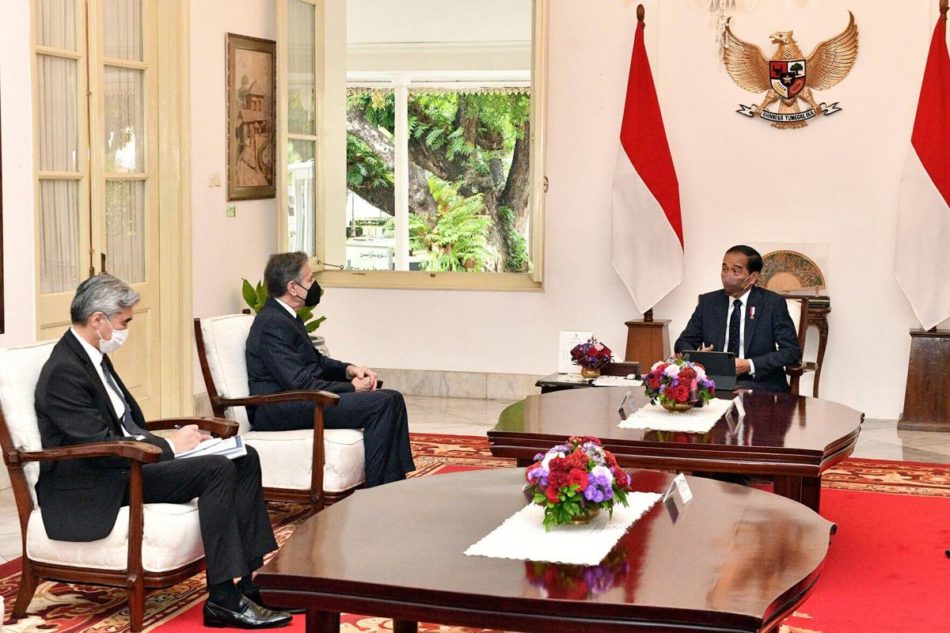By virtue of its geography, the United States has always considered itself as a Pacific power. It has also frequently become entangled in wars in the region, first with the 1899-1902 war against nationalist insurgents in the Philippines, followed by sending troops to the Pacific theater during World War II to arrest the onslaught of Japanese troops across the Asia-Pacific, and finally in Korea and Vietnam, both of which were products of the Cold War and fought to contain the spread of communism.
In the post-World War II era, starting with President Harry Truman and his successors, Washington found itself engaged in Asia on a more permanent footing. Over the years, America’s alliances and partnerships in the region – with South Korea, Japan, Australia and a majority of the ASEAN nations – proved their resilience and capacity to maintain the peace. Interstate conflict, with the exception of the 1971 Indo-Pakistani War, has been relatively limited, and the region has not experienced large-scale war since 1945.
Starting with the end of the Cold War, as Asia’s economies continued to rise and its politics became gradually more liberal, and with China still looking inwards, America had far fewer reasons to worry about Asia.
The prospects of an “Asian Century” marked by promises of continued peace and prosperity contrasted sharply, however, with the Middle East. There, America found itself with a long list of enemy states, and with energy security a key concern in its foreign policy, Washington increasingly became preoccupied in the region.
At the turn of the century, with the emergence of religious extremism, global terrorism, and the beginnings of America’s long wars in Iraq and Afghanistan, many Asian diplomats noticed a shift of superpower influence in the region. As America fought wars to keep itself and its allies safe from the threats posed by non-state actors in the Middle East and elsewhere, the Chinese Communist Party (CCP) under the leadership of Xi Jinping decided its time had come to reassert itself on the world stage. The U.S. was no longer the uncontested hegemon.
Now, with the departure of American troops from Afghan soil and Washington planning on the withdrawal of combat troops from Iraq in the near future, the stage is set for Washington’s foreign policy and national security establishments to rejuvenate the country’s ties in Asia. And, unlike with other policy issues, there is a strong bipartisan alignment of views of China, the nature of the CCP and, the potential threats Beijing poses to America’s national security interests in Asia and elsewhere.
Secretary of State Anthony Blinken’s maiden tour of Asia was marked by his visit to Jakarta, where he laid out his vision for America’s future role in the Indo-Pacific region. Unlike his counterparts in the Trump administration, which took a similar view on China, Blinken and his team understand the important role of alliances and partnerships in maintaining a U.S.-led security order in Asia.
During his recent visit to Jakarta, for example, Blinken reiterated the Biden administration’s commitment to deepening its ties with Indonesia. Underlining the strategic importance of the bilateral relationship, Blinken and his Indonesian counterpart Retno Marsudi discussed economic aspects as well, including American funding for infrastructure projects, and even went so far as to compliment Indonesia for its leadership in the Indo-Pacific region, reminding his audience that it is “the world’s third largest democracy and strong proponent of the rules-based international order.”
Taking front stage at the University of Indonesia to lay out his vision for America’s Indo-Pacific policy, Blinken told his audience that he wants to reinvigorate treaty alliances with Japan, South Korea, Australia, the Philippines, and Thailand. Blinken also talked about deepening cooperation between allies in the region, in forums such as the U.S.-Japan-South Korea trilateral relationship, the AUKUS security pact with Australia and the United Kingdom, and the Quad, which involves Japan, India, and Australia, in order to preserve a free and open Indo-Pacific region.
On the economic front, Blinken noted that the Biden administration is putting together a Comprehensive Indo-Pacific Economic Framework, a patchwork of policy initiatives that will include trade, the digital economy, resilient supply chains, technology, decarbonization and clean energy, as well as infrastructure.
Finally, Blinken also said “the Indo-Pacific nations want more investment from the United States, and the Biden administration’s ASEAN Centrality policy will include the U.S. government becoming more involved in commerce by identifying opportunities American companies aren’t finding on their own and make it easier for them to bring their expertise and capital to new places and new sectors.”
Compared with the U.S.-centric foreign policy of the Trump administration, Blinken’s vision was a breath of fresh air for Asia’s politicians and diplomats. Certainly it is a good start. But while leaders are talking in positive tones about the Blinken visit, behind closed doors there are some healthy doses of skepticism.
One well-known Indonesian diplomat, for example, questioned the ability of Washington to deliver on its promises of bringing more private investment to Asia and funding for infrastructure. He has a point: America’s commercial diplomacy is notoriously weak, and expecting the American bureaucracy to reform itself to deliver better results could easily prove to be unrealistic.
The other reason for skepticism is the question of sustainability. Even if the Biden administration were to deliver on its promises, there is no guarantee those policies would be followed by future administrations. Another Trump or Trump-like presidency, something which is not beyond the realm of possibility, would mean America backtracking on its commitments.
*The writer is former Indonesian Coordinating Minister for the Economy (2000-2001) and former Coordinating Minister for Maritime Affairs (2015-2016).
(The Diplomat)
December 22, 2021
The viewpoints expressed by the authors do not necessarily reflect the opinions, viewpoints and editorial policies of Aequitas Review.


